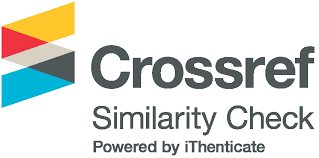Plagiarism includes but is not limited to:
1. Referring and/or quoting terms, words and/or sentences, data and/or information from a source without citing sources in the record citation and/or without stating the source adequately;
2. Referring and/or quoting random terms, words and/or sentences, data and/or information from a source without citing a source in the record citation and/or without stating the source adequately;
3. Using a source of ideas, opinions, views, or theory without stating the source adequately;
4. Formulating the words and/or sentences themselves from the source of words and/or phrases, ideas, opinions, views, or theory without stating the source adequately;
5. Submitting a scientific papers produced and/or published by others as a source of scientific work without express adequately.
Plagiarism-free articles must comply with these requirements:
- Write a quote from someone else's writing (by quoting indirectly) that has been well paraphrased, by making your own words, rather than copying and pasting or typing the original word for word source, and writing the reading source according to the rules of scientific writing.
- Writing with direct quotes, quoting exactly the same words as the original writing must use quotes (for writing less than 40 words), or if the quote consists of more than 40 words, the paragraph must be curved and apply different font sizes.
- Mention the original sources of other people's ideas that are being used, both from published and unpublished writings, both from oral or written sources, in any media form.
The Journal will ensure that every published article will not exceed 20% similarity score and no single source above 3%. Plagiarism screening will be conducted using Turnitin. If the author fails to comply, they will be given sanctions such as: reprimand, letter of warning, revocation of the article, or cancellation of publication.





















